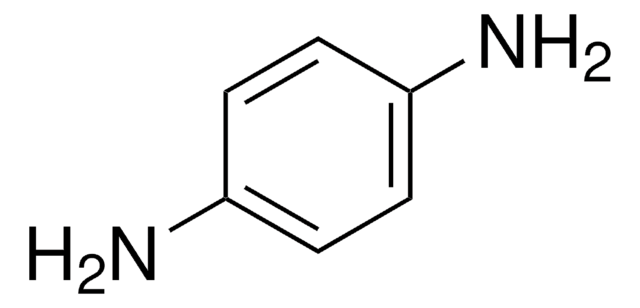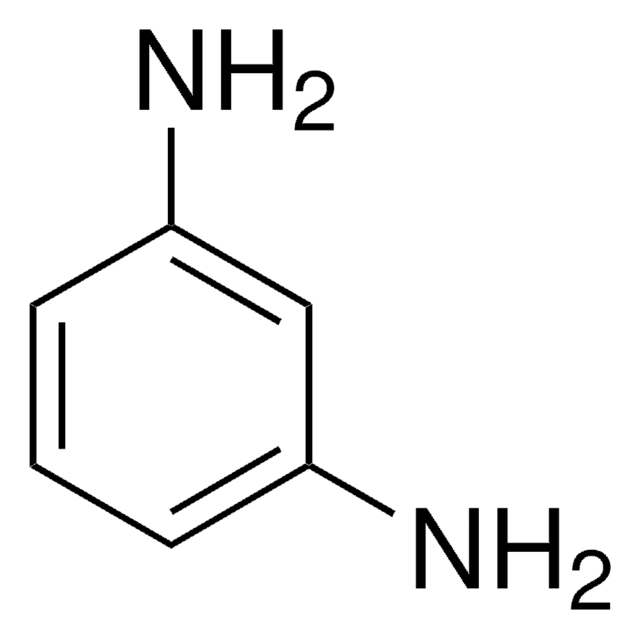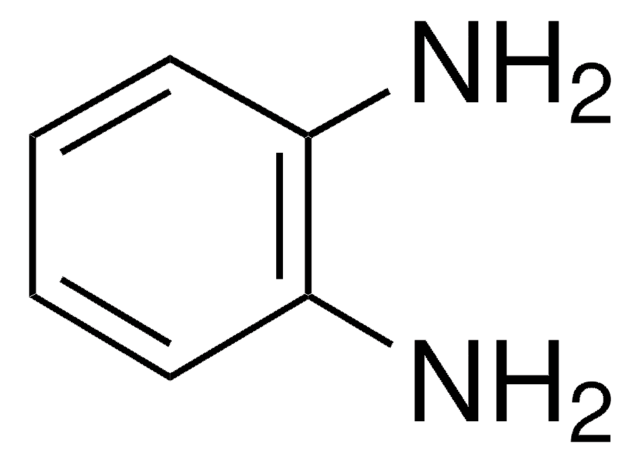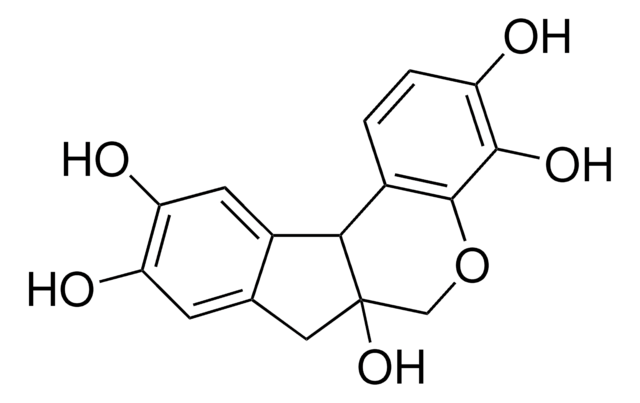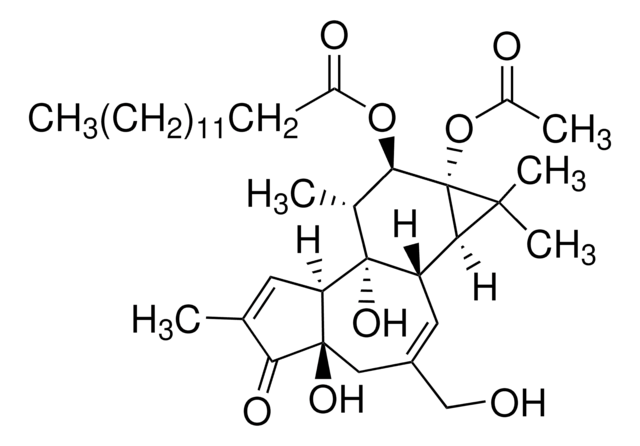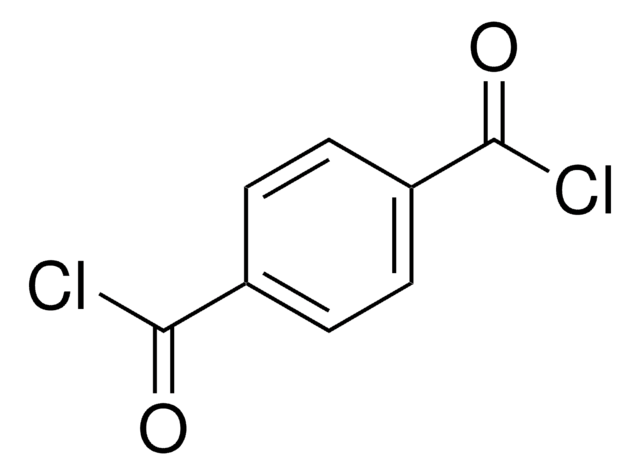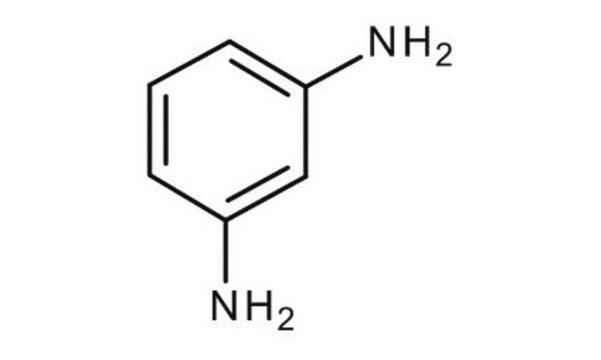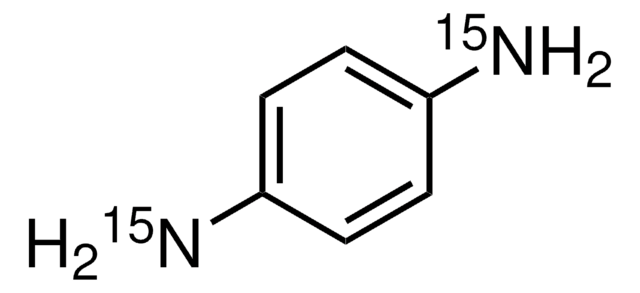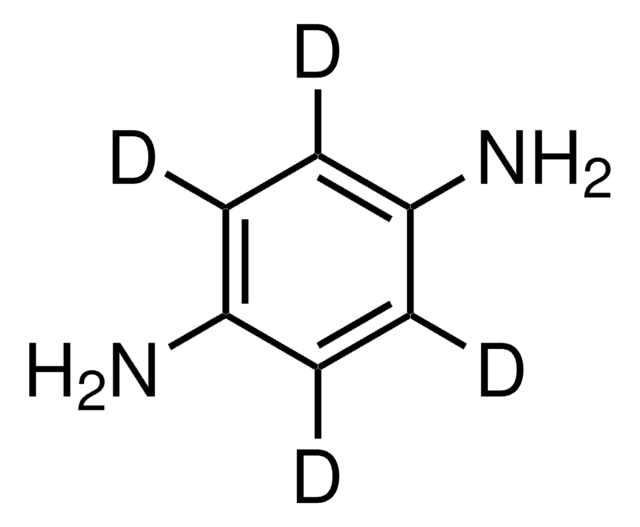P6001
p-Phenylenediamine
98% (GC)
Synonym(s):
1,4-Benzenediamine, 1,4-Diaminobenzene, 1,4-Phenylenediamine
About This Item
Recommended Products
vapor density
3.7 (vs air)
Quality Level
vapor pressure
1.08 mmHg ( 100 °C)
description
anti-fade reagent
assay
98% (GC)
bp
267 °C (lit.)
mp
138-143 °C (lit.)
SMILES string
Nc1ccc(N)cc1
InChI
1S/C6H8N2/c7-5-1-2-6(8)4-3-5/h1-4H,7-8H2
InChI key
CBCKQZAAMUWICA-UHFFFAOYSA-N
Looking for similar products? Visit Product Comparison Guide
Related Categories
Application
- to evaluate its sensitization potential in vitro in langerhans-like dendritic cells and autologous T cells
- to treat the dorsal sides of the ears of mice, to study its systemic immunological effects
- in glycerol to coverslip coronal sections in the attempt to count Aβ plaques
Anti-fade reagent is added to the mounting medium in fluorescence microscopy to retard photobleaching of fluorescein and other fluorescent dyes.
Biochem/physiol Actions
Caution
signalword
Danger
Hazard Classifications
Acute Tox. 3 Dermal - Acute Tox. 3 Inhalation - Acute Tox. 3 Oral - Aquatic Acute 1 - Aquatic Chronic 1 - Eye Irrit. 2 - Skin Sens. 1 - STOT SE 1 Oral
Storage Class
6.1C - Combustible, acute toxic Cat.3 / toxic compounds or compounds which causing chronic effects
wgk_germany
WGK 3
flash_point_f
230.0 °F - closed cup
flash_point_c
110 °C - closed cup
ppe
Eyeshields, Faceshields, Gloves, type P2 (EN 143) respirator cartridges
Certificates of Analysis (COA)
Search for Certificates of Analysis (COA) by entering the products Lot/Batch Number. Lot and Batch Numbers can be found on a product’s label following the words ‘Lot’ or ‘Batch’.
Already Own This Product?
Find documentation for the products that you have recently purchased in the Document Library.
Customers Also Viewed
Our team of scientists has experience in all areas of research including Life Science, Material Science, Chemical Synthesis, Chromatography, Analytical and many others.
Contact Technical Service